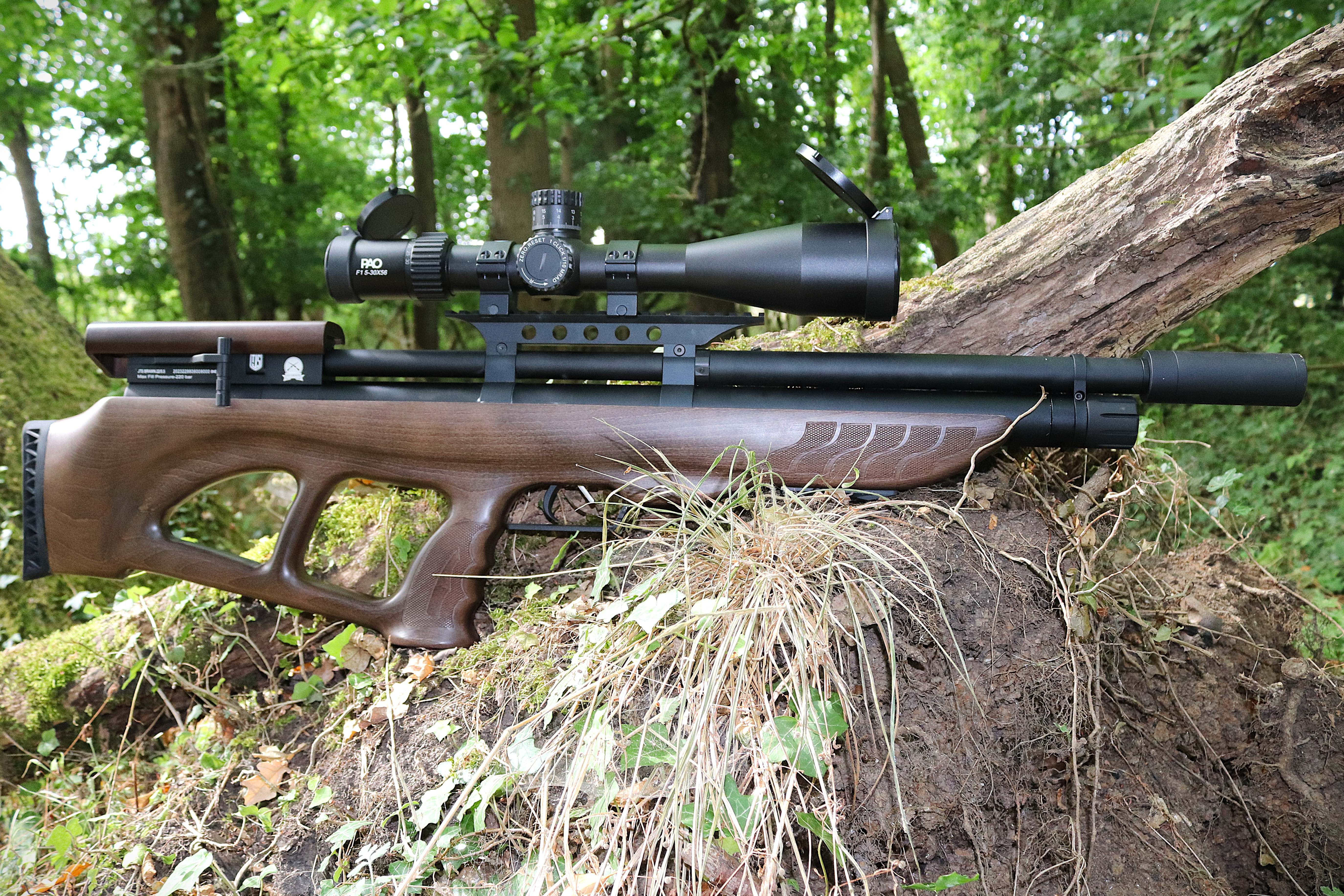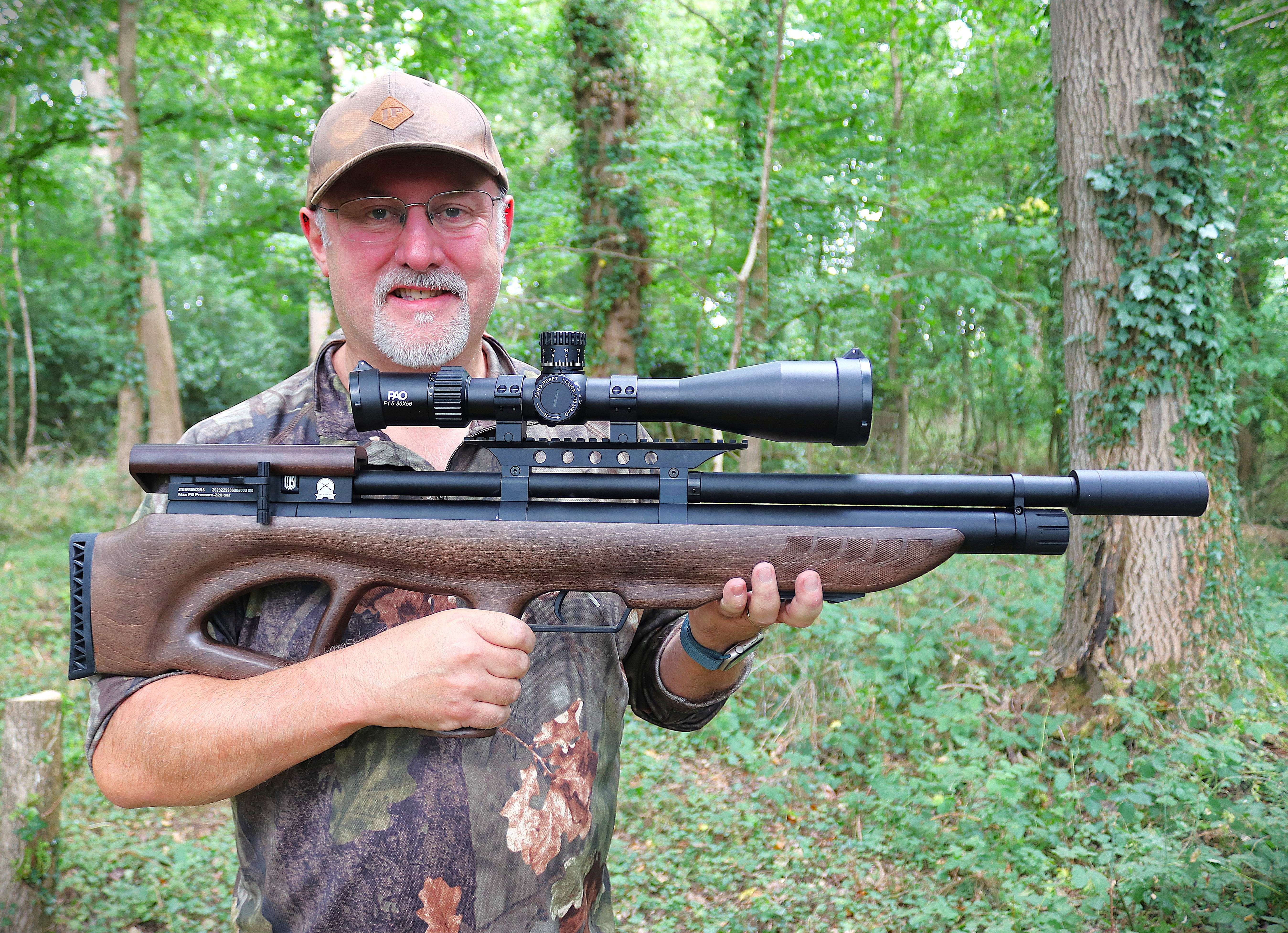
I have been very fortunate to spend a few weeks with one of the first new JTS Brawn bullpup airguns to reach the UK. Distributed by The Shooting Party, this compact PCP costs just £629 and boasts performance that exceeds its very reasonable price tag.
The Shooting Party has an undeniable knack for finding high quality products and selling them at a reasonable price. The company brought us PAO scopes and the JTS Airacuda Max – a regulated, magazine-fed PCP capable of embarrassing many more expensive rifles.
A design, manufacturing and marketing collaboration between The Shooting Party, China and Katy, Texas based JTS Airguns, the newly available JTS Brawn Bullpup looks set to continue the trend. I’ve been taking a close look at the .22 calibre model.
Below: Rich put the JTS Brawn to the test on hunting trips as well as on the range
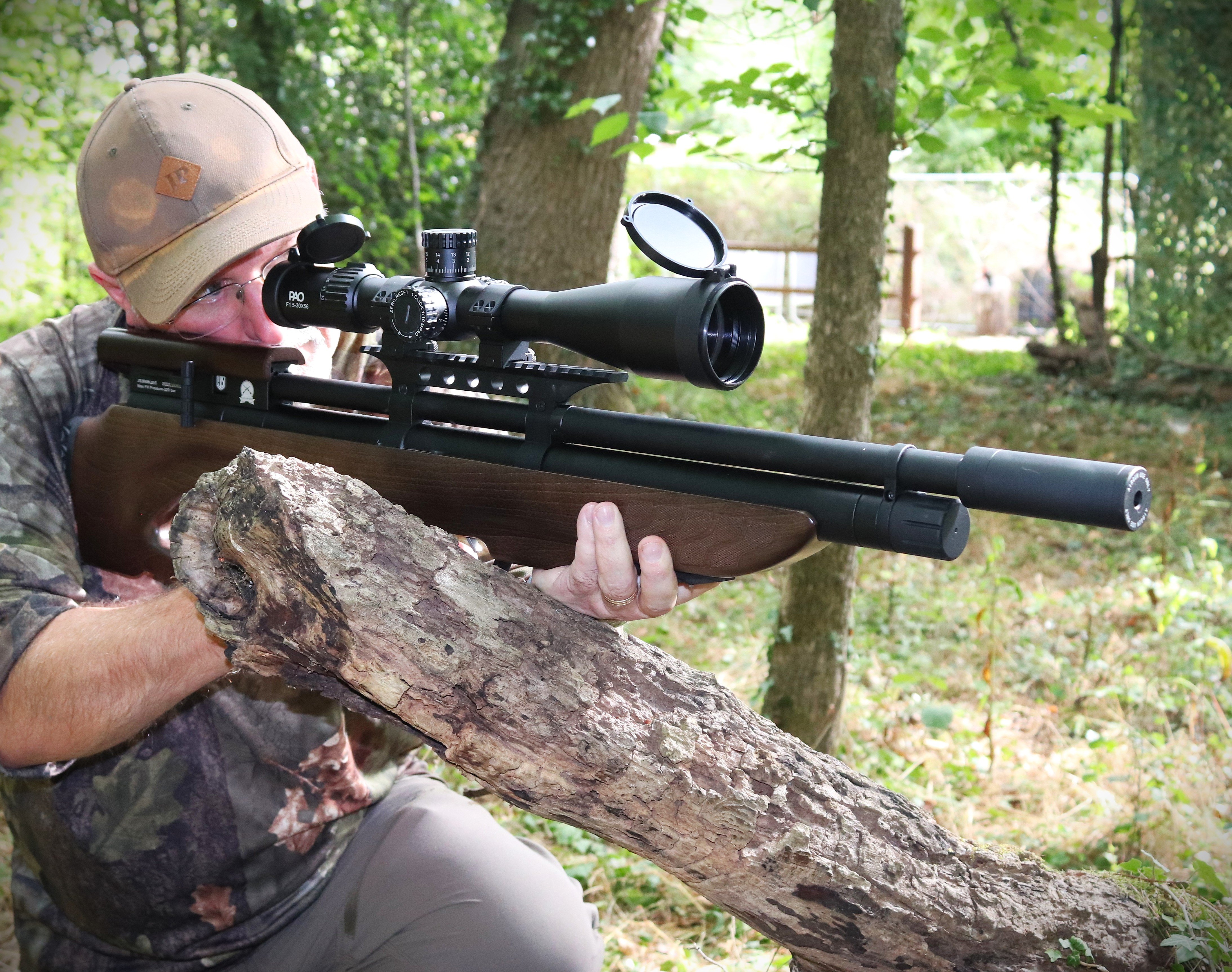

The JTS Brawn Bullpup is well named as it is 920mm long (with silencer) and weighs 4.4kg unscoped. And whilst that suggests bullet-proof build-quality, you’ll want to consider fitting a sling if you intend using it in the field. Of course, other than carrying it from the car to the range, the weight is less of a problem for bench shooters. In fact, if anything, it’s a bonus, making the rifle very stable on aim.
Despite there being quite a lot of it, the hardwood stock is undoubtedly pleasing on the eye with two large cutouts and a slimmer underside profile that runs from the butt to halfway down the forend. Panels of chequering on the forend and pistol grip, which also features finger contours, aid grip.
There’s no adjustment on the perforated rubber butt pad but there is a wooden cheek rest with a cutout on the left side to accept the magazine. As cheek rests go, it’s on the chunky side and I found it required the use of high mounts to achieve proper eye alignment in most cases. Removing the cheek rest enables the use of lower mounts but means having to rest your cheek on the Picatinny rail underneath. As it was, our test rifle came with a PAO F1 5-30x56 scope which necessitated a set of high Sportsmatch mounts anyway.
Below top: The JTS Brawn's ambidextrous stock has a steep, contoured pistol grip
Below bottom: The sculpted cheek support makes for comfy shooting but means you'll need high scope mounts

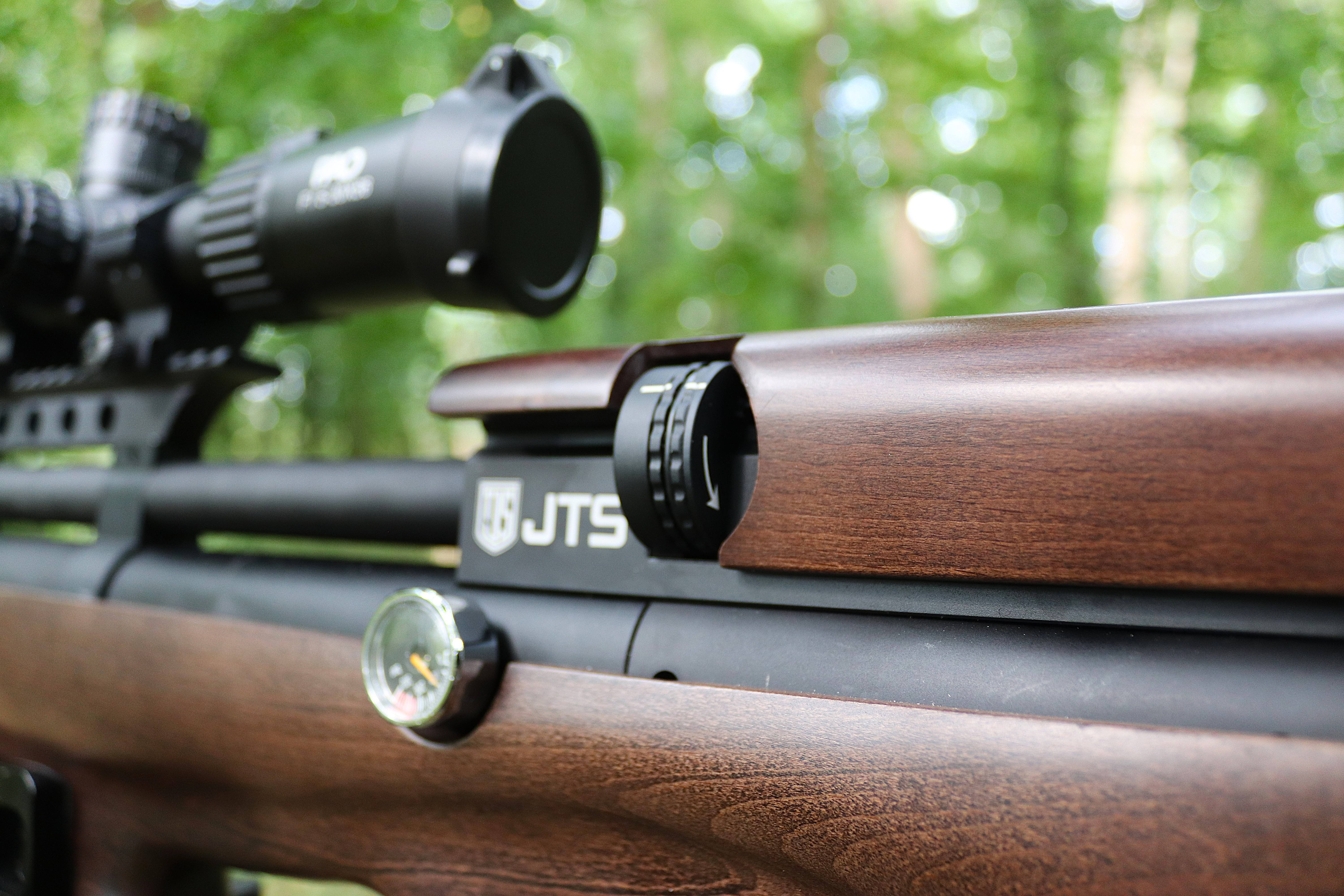
Located on the right, the sidelever is set back on the JTS Brawn and on our test rifle it needed, initially at least, a firm tug to cock the action. Pushing the sidelever forward probes a pellet from the magazine – 10-shot in .22 and 12 in .177 – and seats it in the breach.
You get two high quality metal magazines, which look the same as those in the JTS Airacuda Max. There’s no need to pre-rotate the inner drum; simply push a pellet into the recessed dish and make sure it is well-seated before rotating anti-clockwise to the next chamber. Once full, the magazine inserts into the breech from the left and a white line marker indicates when you are empty.
Triggers are all too often a weak point on bullpups (usually because of the extended linkage required by their design) and whilst the one on our test rifle was a little notchy to begin with, it settled down after a magazine or two. There’s no means of external adjustment, not that any was needed on our rifle. The first stage was short but transitioned to a longer but predicable second stage that let off cleanly.
The trigger guard has the smallest of gaps before the pistol grip that could, in theory, snag on a hide, clothing or undergrowth. That said, no such issues arose during the many hunting trips on which I took the JTS Brawn.
Forward of the curved trigger, the safety catch is a straight blade that is engaged when pulled back towards the trigger, and off when pushed forward. I’m not a fan of safety catches located anywhere near the trigger and I’m even less keen on catches that are noisy or imprecise to use. Fortunately, I had nothing to complain about in this regard as the catch is both positive and silent to operate.
Below top: The JTS Brawn's magazine is dependable and easy to load
Below bottom: The safety catch is positioned in front of the sweeping trigger blade
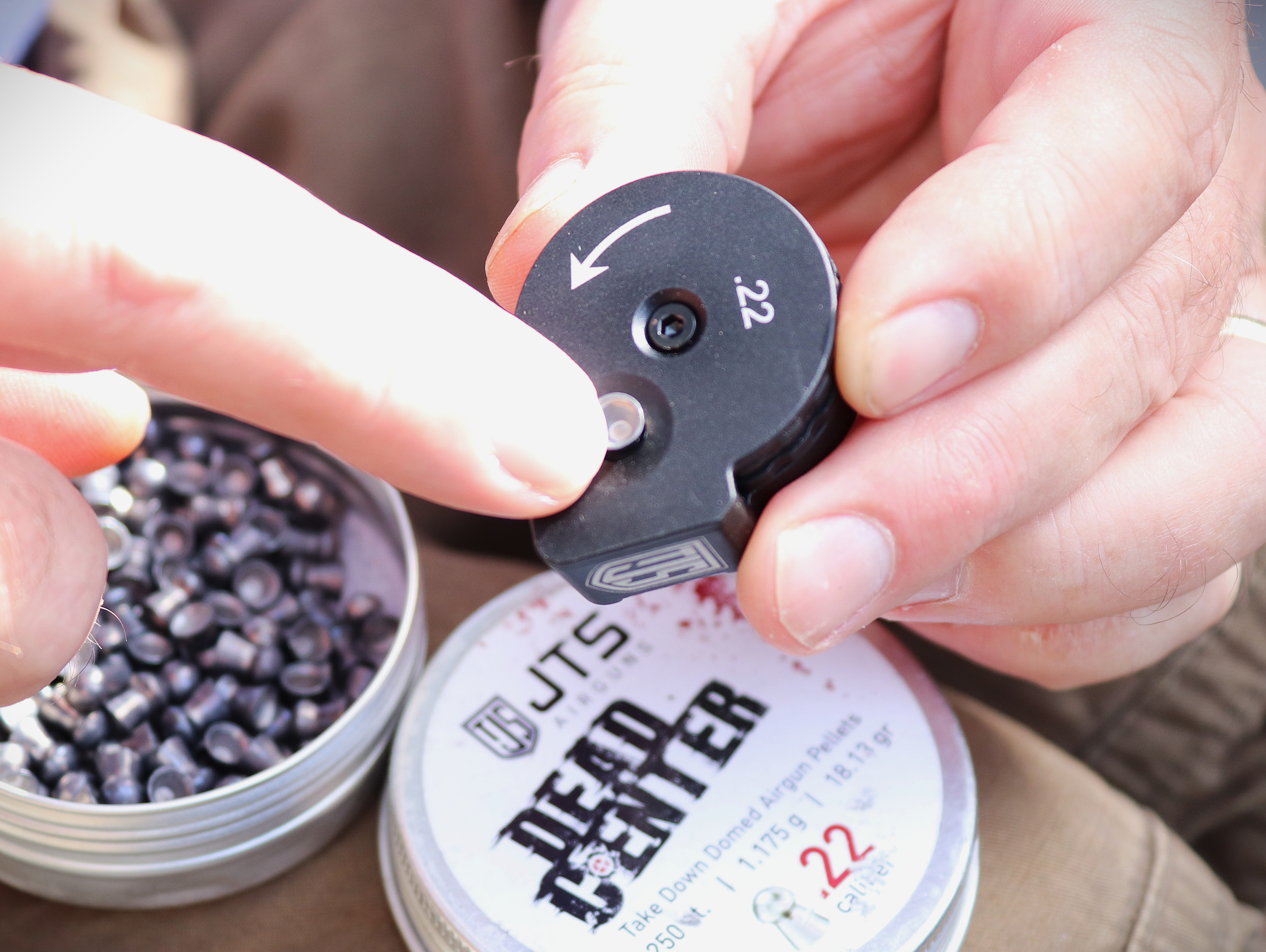
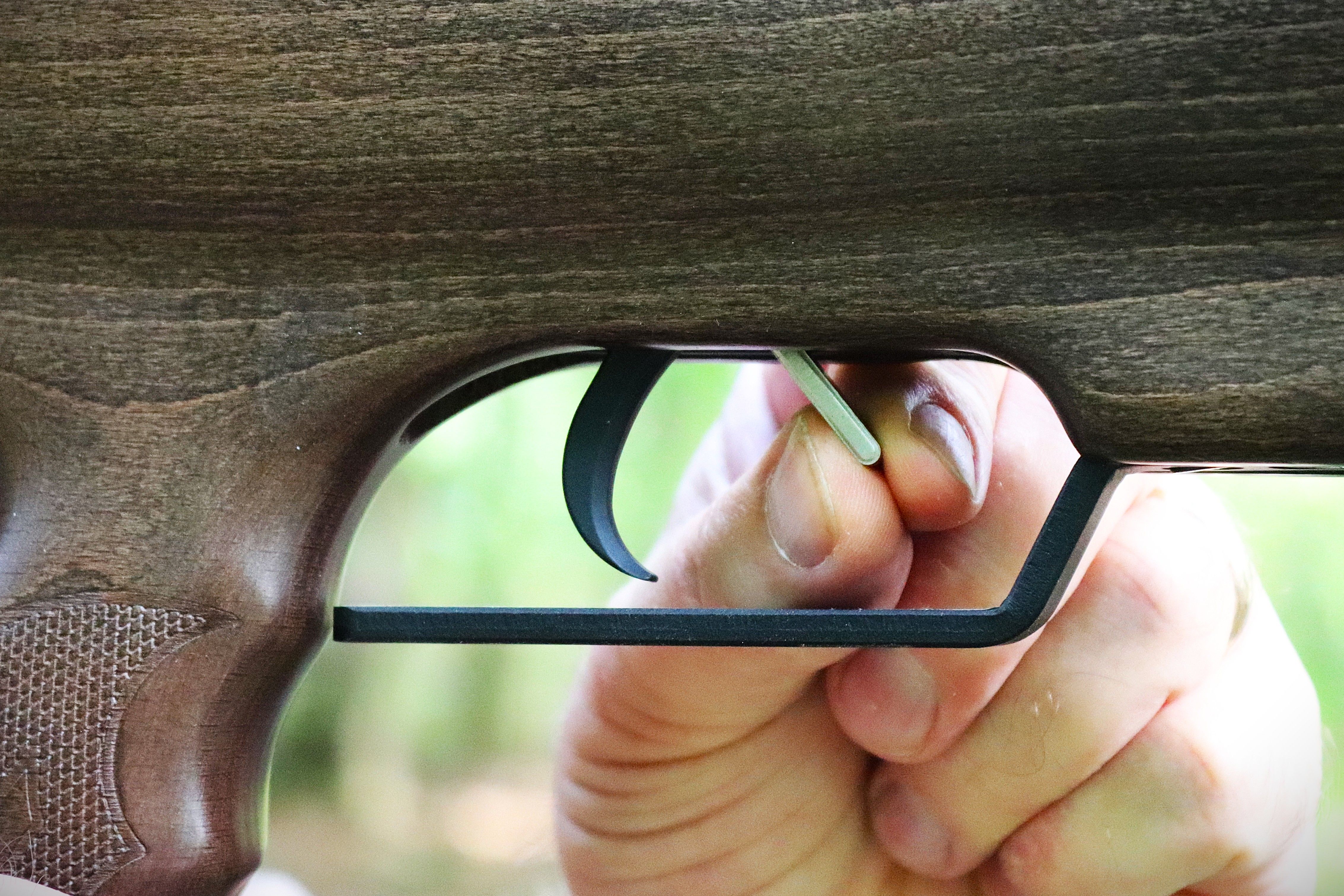
A gauge located forward of the magazine provides an at-a-glance indication of regulator pressure and for 12ft/lb rifles is set at around 100 bar. Although the indicated maximum air fill is 220-bar, The Shooting Party recommends 200-bar which is enough to deliver 115 shots in .22 and a little less – around 100 shots – in .177.
Unlike most rifles, the fill pressure gauge is offset to the side in a small pod at the front of the cylinder. This means the dial faces back towards the shooter, and is ideally positioned to see how much air you have left. Hunters could find it snags on hides and undergrowth – not that I found this, once again, to be the case during my many field tests. Another interesting feature of the Brawn's gauge is that it can be rotated around the cylinder (when the cylinder is empty) and set on the opposite side if you prefer.
The air filling procedure is simple enough. Unscrewing a cap at the muzzle end of the air cylinder gives direct access to the fill valve to which a foster fit attachment snaps on – no probe to have to worry about.
Baffles in the fully shrouded barrel do a good job of reducing muzzle crack. However, when it first came out, Airacuda Max owners complained that accuracy was compromised when they attached a silencer. JTS and The Shooting Party quickly addressed the issue by designing their own silencer and giving it to customers for free.
The same silencer is included with the Brawn Bullpup and attached via a ½ inch UNF thread that is accessed by unscrewing a muzzle thread protector. According to The Shooting Party, some third-party silencers conflict with the baffles in the shroud to cause an air vortex that can impair accuracy. As a result, the company recommends using the provided moderator, although it says Donny FL products work as well.
Whilst the JTS silencer is compact and works extremely well, it has to be loosened, or even removed completely, to take off the cylinder cap and properly access the valve to fill up with air. That may sound like an unnecessary faff but in truth, it’s easy enough to live with. More importantly, I found removing and re-attaching the silencer did not affect accuracy.
Below: The JTS Brawn bullpup's rear-facing gauge is very easy to read and can be rotated around the cylinder
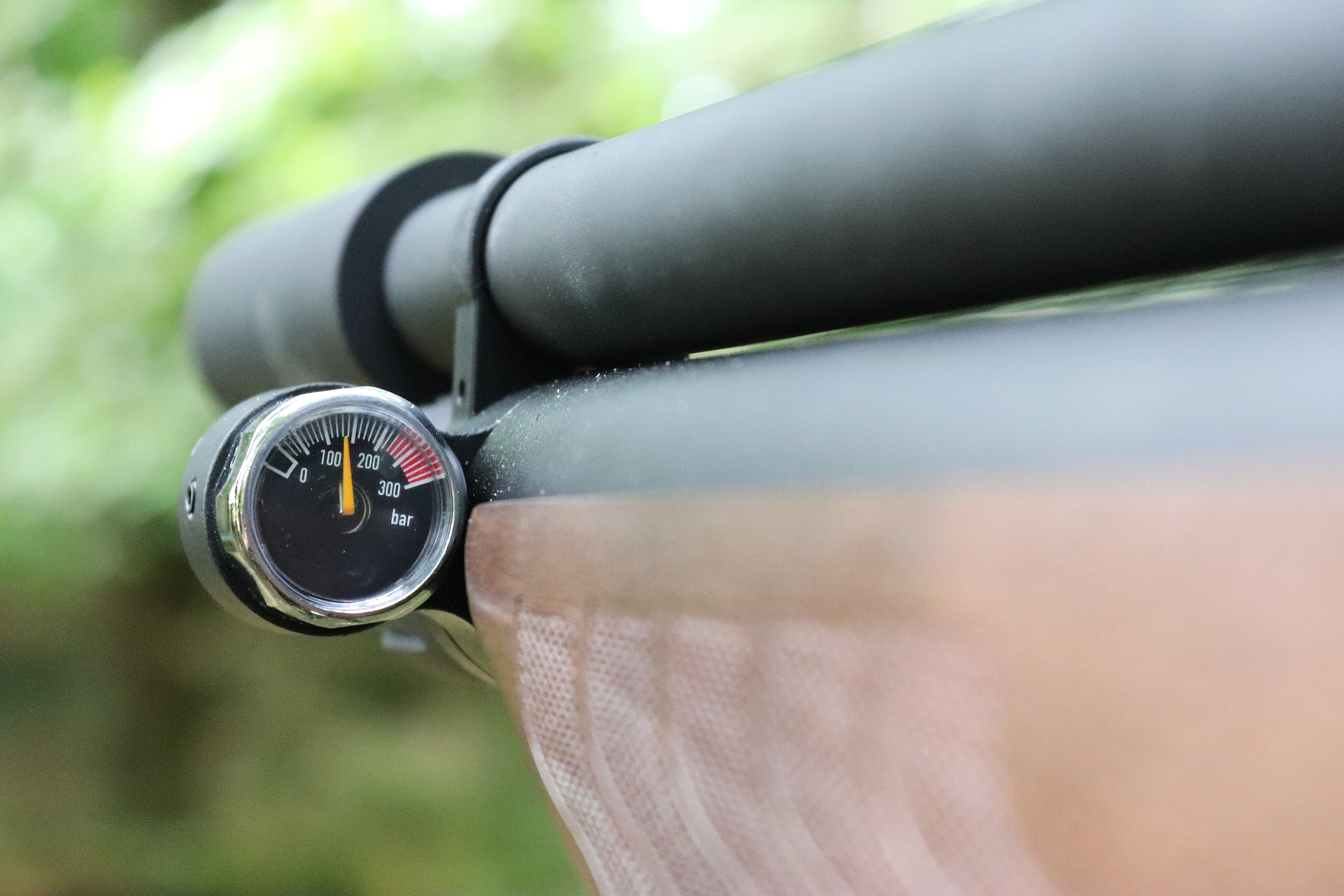

On the range, the ergonomics are such that it’s easy to get into a comfortable rhythm shooting the JTS Brawn Bullpup. It sits comfortably in the shoulder and the cocking stroke, once run in, is smooth to operate and the magazine cycles cleanly.
A few pull-throughs to clean the barrel saw a huge improvement in initial grouping, and with JTS Dead Centre 18.13 grain pellets – which The Shooting Party says JTS used when designing the barrel – I shot 17mm and 21mm centre to centre 10-shot groups at 20 and 30 metres respectively.
The chronograph showed impressive consistency too, with a spread of 19 feet per second (FPS) and an average of 531 FPS or 11.35 ft/lb.
I’ve always found a true test of a rifle’s shootability is the way it performs in the field. Shooting grey squirrels from a hide and resting on a set of trigger sticks, the JTS Brawn Bullpup put eight on the floor at 24 metres with as many shots and a minimum of fuss.
The rifle’s weight was a little harder to ignore when moving around the farm but would have been easily dealt with by fitting a sling, which would require a stud to be drilled into the underside of the butt and a Picatinny sling attachment fitted to the rail under the forend. Swapping the PAO scope for a DNT Optics Zulus 2 night vision scope, I shot as many rats with the Brawn Bullpup as I would have with a rifle costing three times as much.
Like its full-length JTS Airacuda Max stablemate, the Brawn Bullpup represents great value for money and in terms of features and performance, will hold its own against much more expensive alternatives.
There’s no getting away from the fact it is a weighty rifle. That’s less of an issue on the range but something to consider if you intend using the Brawn for hunting.
The air filling process is a little quirky but easily lived with and doesn’t detract from the JTS Brawn bullpup being a great example of an affordable rifle that will perform at a level as well or better than many rivals costing much more.
FROM: The Shooting Party
MAKER: JTS Airguns
MODEL: Brawn (bullpup)
PRICE: £629
LENGTH: 840mm (33in) without silencer, 920mm (36in) with silencer
WEIGHT: 4.4kg (9.7lb)
CALIBRE: .177 and .22 (featured)
POWER: 11.35ft/lb
MAXIMUM FILL PRESSURE: 220 bar (200 recommended)
SHOTS PER FILL: Circa 100 in .177 and 115 in .22
Article first published 23rd July 2025
